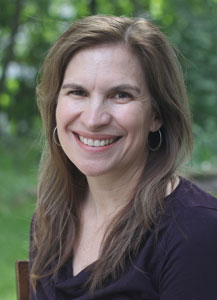AgBioResearch scientist launches new field of water research, nets $2.2 million NSF grant
Lakes, streams and wetlands are not isolated ecosystems, and an MSU AgBioResearch scientist and her colleagues are pioneering a new field of research to show just how interconnected they are to their surroundings.
 Lakes, streams and wetlands are not isolated ecosystems, and a Michigan State University (MSU) AgBioResearch scientist and her colleagues are pioneering a new field of research to show just how interconnected they are to their surroundings.
Lakes, streams and wetlands are not isolated ecosystems, and a Michigan State University (MSU) AgBioResearch scientist and her colleagues are pioneering a new field of research to show just how interconnected they are to their surroundings.
Patricia Soranno, associate professor of fisheries and wildlife, has netted a $2.2 million National Science Foundation (NSF) grant to gauge land use and climate change’s impact on freshwater ecosystems and, in the process, pioneer the research field of landscape limnology.
Soranno is leading a team of researchers from three universities – MSU, Iowa State University and University of Wisconsin-Madison -- who have been awarded a five-year grant for macrosystem biology, a new program studying ecosystems at the continental scale. As the foundation of their work, they will use landscape limnology, which is the study of bodies of water as they interact with one another as well as with natural and manmade features, to learn how all these factors affect freshwater processes.
“Traditionally, bodies of water have been studied as isolated ecosystems,” Soranno said. “Our research uses landscape limnology to study fresh waters as integrated elements in the landscape to improve our understanding and develop approaches needed for multiecosystem management.”
For example, a lake in Minnesota’s Boundary Waters faces different influences – both natural and manmade – than a body of water near a large urban setting, such as Detroit.
“Our goal is to create a new understanding so tools can be made for natural resource managers to address their unique freshwater resources in a landscape context instead of simply viewing them as single entities, disconnected from all that surrounds it,” Soranno added.
Soranno and her interdisciplinary team of researchers – including MSU professors Kendra Spence Cheruvelil, fisheries and wildlife, and Pang-Ning Tan, computer science and engineering -- will collect data on lakes, nutrients and watersheds from more than 5,000 lakes in more than 10 states. Thanks to the Clean Water Act and the wealth of data it has generated, they have more than 30 years of data to analyze using the latest statistical modeling and geographic information system tools and eventually, will make the results available to the public.
The results will help communities and states to better manage the impact of urban and suburban development, fish stocking and regulations, herbicide applications and water withdrawal policies.
“An understanding of how climate and land use affect freshwater ecosystems is needed to forecast, manage and repair damage from environmental change at local and regional scales,” Soranno said. “This project will change the way people view and conduct research on large-scale living systems.”
To help promote this new approach to scientists and policymakers, the team of researchers is involving several undergraduate, graduate and doctoral students, and representatives from state and federal agencies.
“Understanding the ecological consequences of wholesale changes in climate and land use is in its infancy,” Soranno said. “So, as part of this grant, we are looking to train the next generation of macrosystem ecologists to tackle such important challenges.”



 Print
Print Email
Email




